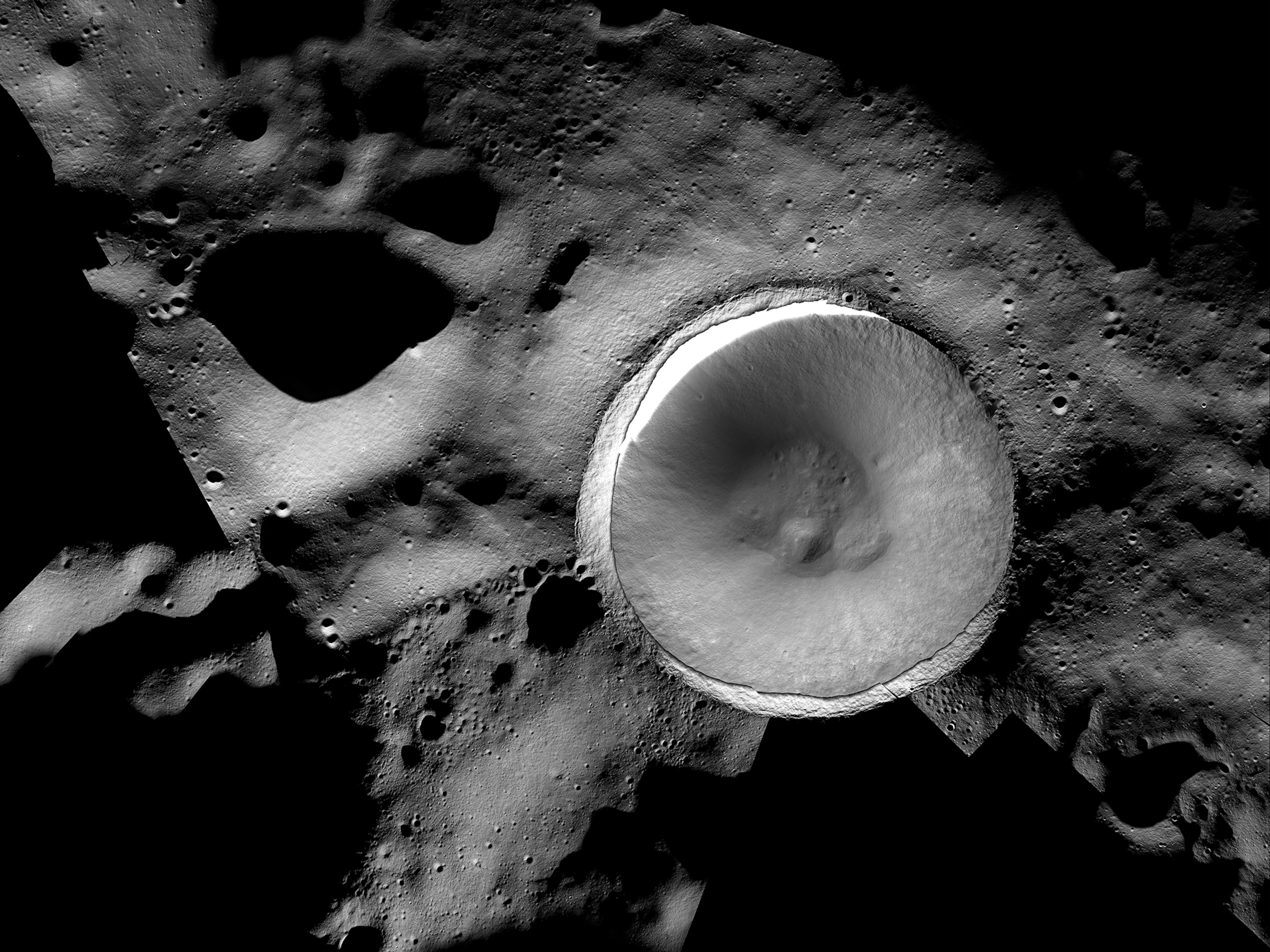
Saturn Moon Loses Its Ring, Gains a Mystery
Electron data suggested ring around Rhea, but camera doesn't lie.
Until this week Saturn's small moon Rhea was the only known solid space object thought to have a ring. (Other known ringed bodies, such as Saturn, are mainly gaseous.)
But a new study of optical images has failed to detect any signs of structures encircling the natural satellite.
Rhea orbits within Saturn's magnetic field, which creates a bubble of charged particles—ions and electrons—around the planet. During a 2005 flyby of Rhea, scientists working with NASA's Cassini spacecraft expected to see a dip in their readings where the moon's surface intercepted the particles.
The craft's readings did show the moon's wake, but they also revealed several unexpected dips in particle detections just outside the moon's diameter.
The best possible explanation seemed to be that something physical—a ring of debris around Rhea—was blocking the ions and electrons from reaching Cassini. (See "Saturn Moon May Have Rings—A First.")
However, analysis of images taken by Cassini between 2008 and 2009 failed to turn up any evidence for rings around the Saturn moon. (See pictures of Saturn and its moons.)
"We're pretty confident that there is no solid material orbiting the moon," said astronomer Matthew Tiscareno of Cornell University in New York.
(Related: "Saturn Moon Has Surprisingly "Slushy" Insides.")
Moon Mystery Comes to Light
Tiscareno and his team analyzed 65 Cassini images of Rhea, some of which were taken with the sun behind the craft and some with the sun more or less in front of Cassini.
"Those two geometries probe different particle sizes, because dust tends to scatter light forward whereas larger particles tend to reflect light backward," Tiscareno explained.
Instead, the pictures showed nothing illuminated around Rhea, disproving the ring hypothesis—although the new study doesn't shed any light on what was responsible for the 2005 observations.
"It's a real mystery," Tiscareno said. "I think we make a strong case that it's not a ring of solid material around the moon.
"As for what it is, that's for the magnetospheric community to figure out."
The new findings are detailed in a recent issue of the journal Geophysical Research Letters.





